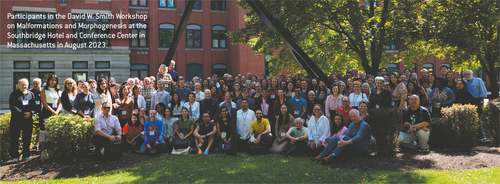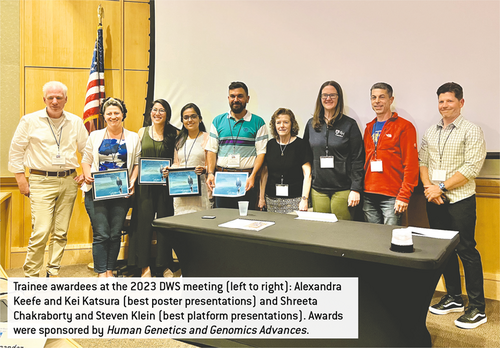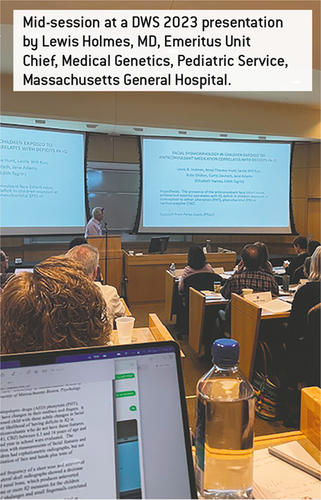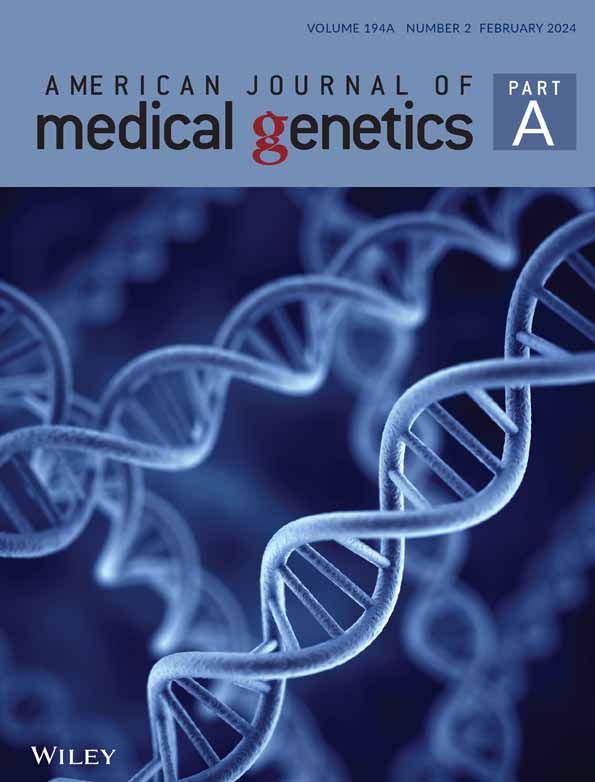David W. Smith Workshop: 44 Years and Going Strong
Every year, a select group of clinicians and scientists congregate to advance medicine's understanding of normal and abnormal morphogenesis
Medical conferences are rapidly evolving, and many have experienced exponential growth in numbers of attendees. In recent years, the COVID-19 pandemic pushed virtual meetings to the forefront, and, although in-person meetings have returned, many conferences now offer hybrid models. One meeting, however, has stuck firmly to its roots, with no plans for change on the horizon. Now in its 44th year, the David W. Smith Workshop (DWS) on Malformations and Morphogenesis has retained its intimate and interactive nature. Rather than seek to expand its numbers and/or bring in virtual platforms, the DWS evolves its subject matter, setting its sights on exploring the advances in technology that are propelling genetic research.
The workshop honors the memory of David W. Smith, MD, widely known as the father of dysmorphology, a discipline that embraces the study of genetics, environmental factors, and embryology in the diagnosis of birth defects and developmental abnormalities. The workshop concept itself was first suggested by Dr. Smith, who unfortunately did not live long enough to see his idea grow and flourish but died from cancer just 1 year after the first meeting took place. That inaugural meeting, held at the University of California, San Diego (UCSD) in 1980, was attended by some 100 clinicians and research scientists, all of whom had an interest in birth defects.
Endurance Through Evolution
Forty-four–plus years later, the DWS is still going strong, in no small part due to its ability to evolve with the field (Levenson, 2010). “Evolutionarily, it's very interesting because the meeting began at a time when we really didn't know the genetic contributors,” says Ian Krantz, MD, Professor of Pediatrics (Human Genetics) and Director of the Roberts Individualized Medical Genetics Center at the Children's Hospital of Philadelphia and a co-organizer of the meeting.
“What has really changed in these 44 years is the explosion in genetic and genomic information. Now we know a lot of the underlying genetic causes, which were identified through the work and collaboration that came out of this meeting.” Given all the advances in this area, along with those in sequencing and computer technology, the conference has taken on more of a genetic influence. “What is unique about the DWS is that everyone presents an abstract, so every attendee is both a participant and a presenter,” explains Cathy A. Stevens, MD, Professor of Pediatrics and Director of Medical Genetics at T. C.
Thompson Children's Hospital, Chattanooga, Tenn., and a co-organizer of the meeting. “By design it's a small workshop.”
Unlike other meetings, there are no concurrent sessions at the DWS. Instead, all sessions are sequential, which makes it possible for every participant to attend every session if they so choose. Given the opportunities that this format provides, attendance is very competitive, acknowledges Dr. Stevens. More people are interested in attending than there are slots available. “Everyone who is interested in attending has to submit an abstract, and then it undergoes review by a scientific program committee,” she says, reporting that while organizers intend to continue limiting participants, they may expand capacity to 130 people. “But that's about as many as we can have if we want to maintain this as an interactive workshop where everyone is involved.”
DWS Workshop 2023
At this highly regarded meeting of the minds, no one sits passively on the sidelines, and the 2023 DWS was no exception. The August event hosted approximately 125 clinicians and scientists, who gathered for 5 days in Southbridge, Mass., to share and discuss new discoveries, ongoing research, and emerging theories. Among the topics covered were hearing loss, diagnostics, narrative medicine, and non-coding genetic causes of malformation. There were sessions on mechanisms of dysmorphology in inborn errors of metabolism, as well as the expected DWS collaborations.
“One of the most fun sessions is what we call the unknowns session, which we usually have in the evening,” says Dr. Krantz. “This is where physicians present cases or a series of cases of children with diagnoses that seem genetic in origin, but we don't know what they are. Now most of our unknowns are rare cases, as they've all undergone genomic testing but without a diagnosis.”
“Clinical genetics is a rich substrate for the practice of narrative medicine, and many geneticists already employ its tools,” Dr. Nowaczyk says. Her abstract cited 3 “pillars” of narrative medicine: attention (to the patient's story), representation (of the patient and his/her story), and affiliation (with the patient). Applied in the clinic setting, these pillars result in improved patient care, she contends. “When practiced consistently and conscientiously, the tools of narrative medicine, close-reading of literary texts, and reflective writing allow for an easy integration of a narrative approach into clinical encounters,” she concludes.
Reflecting over her long career in genetics, meeting presenter Cynthia J. Curry, MD, Professor Emeritus in Pediatrics at the University of California, San Francisco/Fresno, marvels at the explosive evolution that the field of clinical dysmorphology and genetics has undergone as it has transitioned from descriptive syndromology to elucidation of the molecular and developmental causes of birth defects, syndromes, and other conditions that are seen daily in genetics practices. She credits the workshops with having helped to facilitate this growth.
“My 46 years working in genetics attests to this transformation,” Dr. Curry remarks. “Many breakthroughs in our understanding of genetic conditions began at the David W. Smith meetings, where friendships and collaborations formed during coffee breaks and late-night conversation led to scientific discoveries that have extended far beyond the days of the meeting. My own journey began with observing David Smith's interactions with families at the Children's Orthopedic Hospital in Seattle. At the time, I was fortunate enough to have a mentor in Bryan Hall at UCSF [University of California, San Francisco], who saw me through my too-brief fellowship and the abrupt transition to attending.”
Dr. Curry subsequently moved to Fresno, a city in the central valley of California, and found it to be a “daunting but amazing opportunity for program development. [The experience] pushed me to form friendships and collaborations with colleagues across the U.S. and the world.” Even more profound was that all this growth took place before the internet, notes Dr. Curry. “Remember … no online OMIM, no GeneReviews, no Face2Gene, no DECIPHER, no Gene Matcher. Communication was limited to snail mail and telephone, but somehow it still worked!” she marvels.
Looking ahead, DWS organizers are determined to maintain the meeting's vibrance and relevance in the coming years. “The mission of the David Smith Workshop is to engage the next generation, and we're doing everything we can to enhance the attendance of trainees,” says Dr. Krantz. “Medical students and residents can interact with leaders in the field during meeting sessions, breakfast, lunch, and dinner, and late-night drinks as well. It's a 4-day meeting, and you have full exposure to everyone [because] it remains small and intimate. It's a great experience and we want to maintain it.”
The 45th Annual David W. Smith Workshop on Malformations and Morphogenesis will be held on August 16–21, 2024, on the campus of the University of British Columbia in Vancouver. Abstracts will be due on April 1, 2024.







